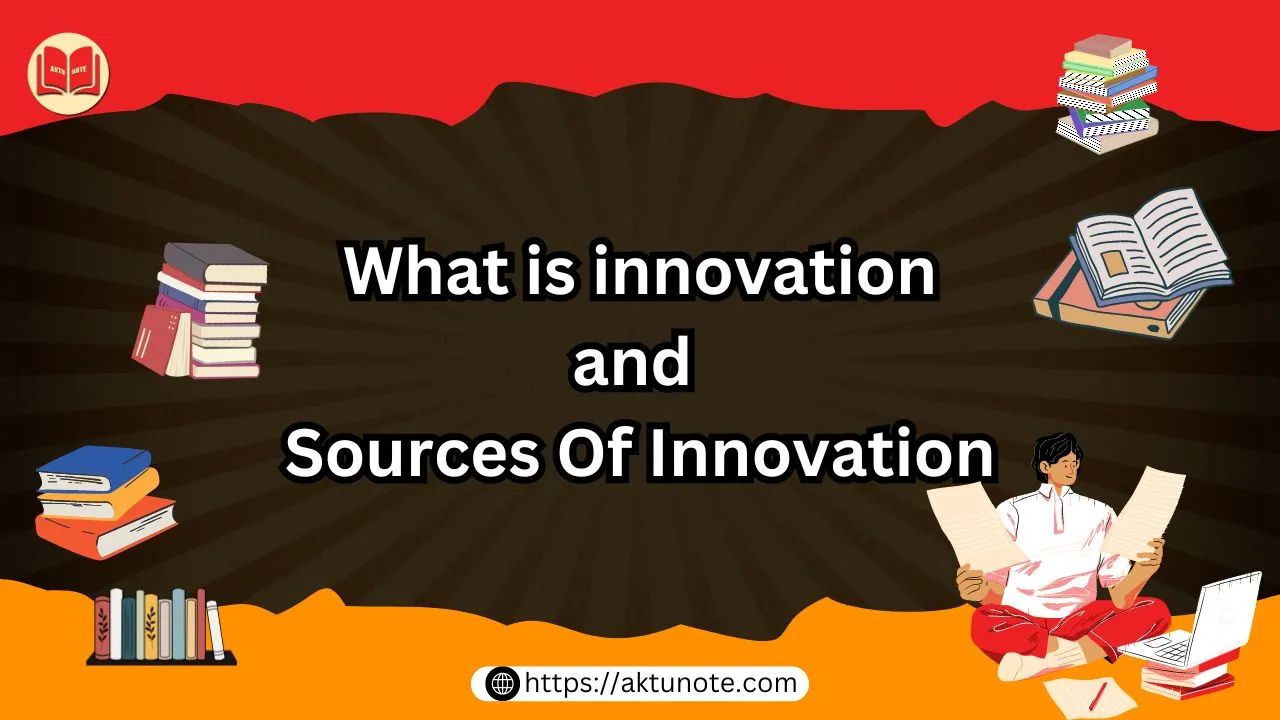Innovation is often considered the lifeblood of progress in today’s rapidly evolving world. Whether it’s the latest technology, a new business model, or an improvement in a traditional process, innovation keeps industries dynamic and competitive. But have you ever wondered where innovation comes from? What sparks the ideas that transform industries or improve everyday life? In this article, we will explore the various sources of innovation, with examples from the Indian context that are relatable to our day-to-day lives.
What is Innovation?
Before diving into the sources of innovation, it’s important to understand what innovation is. Innovation refers to the creation and implementation of new ideas, products, services, or processes that bring about improvement or solve specific problems. It’s not just about inventing something new; it’s about adding value through change. From a more traditional perspective, think of innovation as the jugaad mindset—finding smart, resourceful solutions to everyday challenges.
Market Demand
One of the primary sources of innovation is market demand. When customers need or desire something that current products or services cannot provide, businesses are pushed to innovate. In India, a classic example is the introduction of affordable smartphones. The growing demand for mobile connectivity in both rural and urban areas drove companies like Xiaomi and Micromax to develop cost-effective smartphones, ensuring that even people in small towns could access modern technology.
In a typical Indian household, this source of innovation can be seen when homemakers adapt recipes to suit the tastes of their families. When children crave new snacks or dishes, mothers often innovate in the kitchen, mixing traditional and modern ingredients to satisfy their families’ preferences.
Technological Advancements
Technological advancements often open new doors for innovation. When new technologies emerge, they create opportunities for businesses to innovate and improve products or services. India’s thriving IT sector is a prime example of technological innovation driving growth. From the rise of Infosys and TCS to the use of Artificial Intelligence and Blockchain in various industries, technology has been a constant source of innovation.
A more relatable example can be found in how digital payment systems, like Paytm and Google Pay, revolutionized how we handle money in India. The technology behind these apps allowed millions of Indians—ranging from local vegetable vendors to urban professionals—to adopt a cashless lifestyle, offering convenience and efficiency that was unthinkable a decade ago.
Government Policy and Regulation
Government policies and regulations often act as a catalyst for innovation, especially in India, where policies are designed to promote specific industries or address societal challenges. Initiatives like Make in India, Digital India, and Startup India have fostered an environment where businesses are encouraged to innovate. These programs have not only pushed for technological advancements but also supported the rise of startups and entrepreneurship across the country.
For example, the Aadhaar system is a government-led innovation that revolutionized how Indians interact with public services. By creating a unique digital identity for every citizen, Aadhaar streamlined processes like opening a bank account, receiving government subsidies, and applying for loans.
In the household context, government policies such as the Ujjwala Yojana, which provides free LPG connections to rural households, have spurred innovation in cooking appliances, focusing on efficiency and safety for users.
Competition
In a competitive market, businesses must constantly innovate to stay ahead of their rivals. When one company launches an innovative product or service, competitors often follow suit, either by improving upon the original innovation or by creating something entirely new. This type of competition-driven innovation is common in industries like mobile telecommunications, FMCG (Fast-Moving Consumer Goods), and e-commerce.
For instance, when Reliance Jio entered the telecom market with affordable data plans, it disrupted the entire industry. Competitors like Airtel and Vodafone were forced to innovate and lower their prices, introduce new services, and improve network quality to remain competitive. This competitive pressure benefited consumers, who now enjoy cheaper and faster internet services across India.
In our homes, competition can inspire innovation as well. When a family sees their neighbors using solar panels to save on electricity bills, they might be encouraged to adopt similar technology, thereby spurring the innovation of more energy-efficient solutions.
Unexpected Events and Crises
Sometimes, innovation is born out of necessity during crises or unexpected events. The COVID-19 pandemic is a recent example of how a global crisis led to innovations in various sectors, especially healthcare, education, and e-commerce. In India, telemedicine services like Practo saw a surge as people turned to online consultations to avoid visiting hospitals. Similarly, educational institutions quickly adopted online learning platforms, which allowed students to continue their studies from home.
At the household level, the pandemic forced many families to find new ways to manage their time and resources. For example, people began to experiment with home-cooked meals, leading to the rise of cloud kitchens and online food delivery services. This period also saw innovations in how families shopped for essentials, with more reliance on e-commerce platforms like BigBasket and Grofers.
Research and Development (R&D)
Investment in Research and Development (R&D) is a significant source of innovation for many companies, particularly those in the pharmaceutical, technology, and manufacturing sectors. By constantly researching new materials, processes, and technologies, businesses can stay at the forefront of their industries and continue to offer innovative solutions.
India’s biotechnology sector is a strong example of R&D-driven innovation. Companies like Biocon and Serum Institute of India invest heavily in R&D to develop vaccines, medical treatments, and biopharmaceutical products that cater to global needs. During the pandemic, India’s rapid development of vaccines, including Covaxin, demonstrated the power of R&D in driving innovation.
On a smaller scale, we can see R&D-driven innovation in traditional Indian crafts. For instance, artisans in places like Kutch or Jaipur are constantly experimenting with new designs and techniques for handicrafts, often blending modern aesthetics with age-old craftsmanship to cater to evolving consumer tastes.
Social and Cultural Trends
Cultural shifts and social trends often inspire innovation as businesses seek to align their products and services with the changing values and behaviors of society. In India, the growing awareness of environmental sustainability has led to innovations in eco-friendly products and services. For example, many companies now offer biodegradable packaging and organic farming products to meet the increasing demand for green solutions.
The shift towards a more health-conscious lifestyle in Indian households has also spurred innovation in the FMCG sector. Companies like Patanjali and Saffola have introduced health-focused products like organic ghee, sugar-free snacks, and herbal supplements, catering to consumers’ desire for healthier food options.
User Feedback and Co-Creation
Involving customers in the innovation process through feedback and co-creation is another powerful source of innovation. By listening to users’ needs, preferences, and pain points, companies can refine existing products or develop entirely new solutions. Many Indian companies, such as Amul and Asian Paints, actively seek customer feedback to continuously improve their offerings.
For example, Amul introduced new product lines based on consumer preferences, such as lactose-free milk and flavored yogurt, showing how user feedback can drive innovation that meets changing consumer demands.
For More Content Check Out :- Innovation and Entrepreneursip
Conclusion
Innovation can come from various sources, and recognizing these sources is key to staying ahead in today’s competitive world. Whether it’s market demand, technological advancements, competition, or social trends, each source plays a crucial role in shaping how businesses innovate. In India, where the diversity of consumers and industries creates a unique environment, understanding these sources of innovation is essential for driving progress and addressing the country’s distinct challenges.
From the everyday jugaad mindset in our homes to the cutting-edge innovations in industries like IT and pharmaceuticals, innovation continues to shape the future of India, improving both our day-to-day lives and the broader economy.

